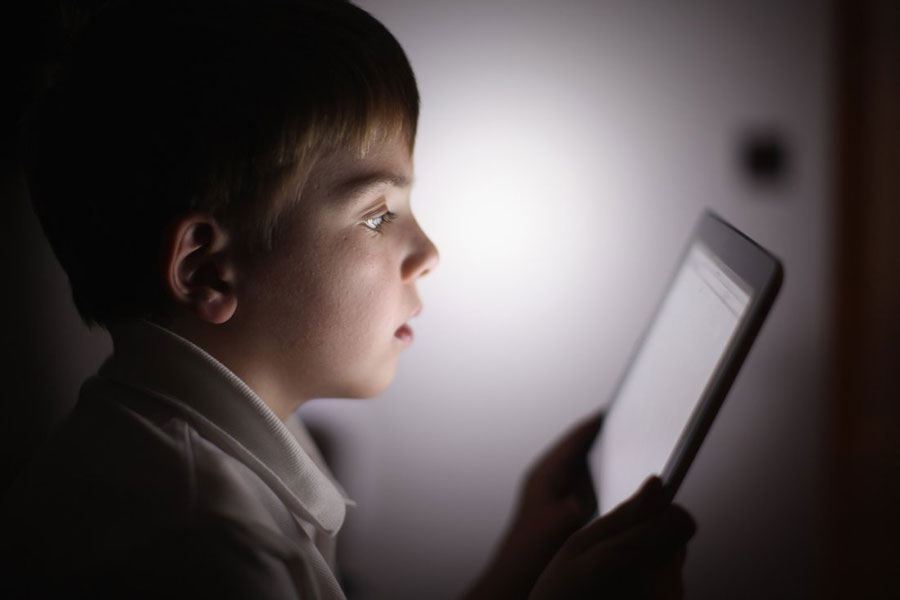The American Academy of Pediatrics released new recommendations regarding how much time children should be exposed to digital media. The new recommendations take into consideration the benefits of exposing young ones the media and how to limit that time to avoid endanger kids’ health.
The new recommendations were published Friday at the AAP official website. Dr. Jenny Radesky, FAAP, and lead author of the policy statement “Media and Young Minds” said that families should take the initiative and supervise their children’s media use. Radesky stated that parents not only have to supervise but to talk with the little ones of the house about the benefits and the dangers of media exposure.

The most dangerous thing about an uncontrol screen time is that kids can stop doing essential activities because they are distracted watching media. From babies to teenagers, if they watch too much media time they do not have a chance to play physical activities, study, talk to others in person or sleep.
According to Dr. Radesky, the most important role when it comes to screen time is that parents become a “media mentor” and not just an observer that establishes regulations. Parents need to teach their children the educational, creative and social character of media and how to balance it with life.
The AAP new recommendations prioritize “creative, unplugged playtime for infants and toddlers.” Nonetheless, an educational and limited time in front of a screen is also healthy to the children’s development.
The new recommendations: Different instructions for different ages.
Among the recommendations, the APP sets specific times and occasions to expose kids to media. Children younger than 18 months, for example, can only interact with a screen when it is for video chatting with relatives and loved ones.
Children between 18 and 24 months can be introduced to media but only to high-quality programming for children. Parents must be watching the show as well to help their kids to understand how media functions and make sure the screen time does not interrupt physical and social activities, nor sleep.
A schedule must be set when the young ones come to ages 2 to 5. Their screen time has to be limited to one hour per day. The shows also have to be high quality to make a positive impact on them and their intellectual skills.
As in the recommendations with toddlers 18 and 24 months old, parents should be there with their children watching the program to help them understand that reality and how they can apply what they learned from it in a real situation.
When children are six years old or older, the screen time is longer and parents only have to make sure it does not interrupt other essential activities and needs, like an eight-hour rest. After a child is 6, the family must be consistent with the limits on the time spent in front of a screen and with which media they are interacting: is it TV? Is it a tablet? The computer?
A healthy home that tries to limit screen time must also designate when media-free times are going to take place and with whom. Those activities can be walking the dog, going to soccer practice or something as simple as having dinner.
To help control media exposure, parents must guarantee that the house has screen-free locations, such as bedrooms or a reading room. If what kids call home has seven rooms and they all have a T.V. or a computer, it will be hard to protect them from excessive media exposure.
Problems start when media replaces necessary activities for a child, such as interacting with other people and practicing social skills, playing sports, or doing other activities outside, and a good night sleep.
When youngsters are exposed to unlimited media, their amount and quality of sleep get affected as their abilities to be social with others when they are face-to-face.
“Parents can set expectations and boundaries to make sure their children’s media experience is a positive one. The key is the mindful use of media within a family,” said Megan Moreno, MD, MSEd, MPH, FAAP, and lead author of the policy statement on media use in school-aged children and teens.
Moreno also emphasized how important is the role parents play when it comes to introducing and educating kids about screen time and what to see because media can have both positive and adverse effects.
Supporting the recommendations with an educational media tool: Family Media Use Plan
The APP also published an interactive, online tool to help families plan their screen time and personalize their schedules. The Family Media Use Plan tool is available on HealthyChildren.org. It lets you create your media plan for each member of the family and also has the Media Time Calculator to do not lose track on how many hours children are exposed to screens.
The fact that nowadays children and teenagers are immersed in a media environment makes it more urgent to establish an organize plan and filter regarding screen time. Broadcasts, streamed television, movies, video games and social media encourages sedentary activities and more hours awake. Limiting the exposure and the content of children in front a screen can make a difference.
Source: American Academy of Pediatrics
